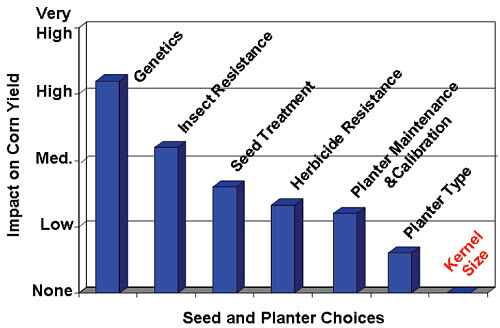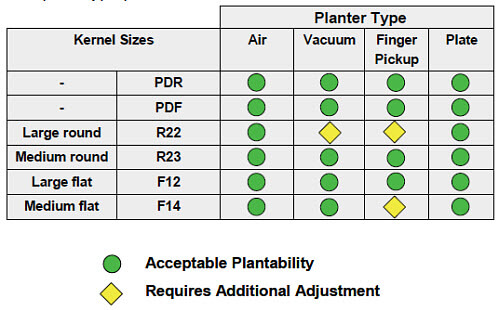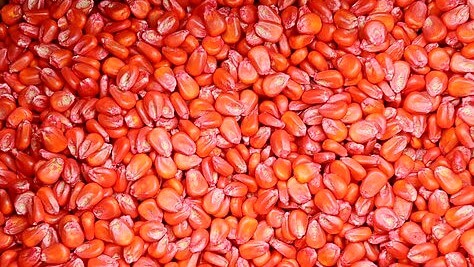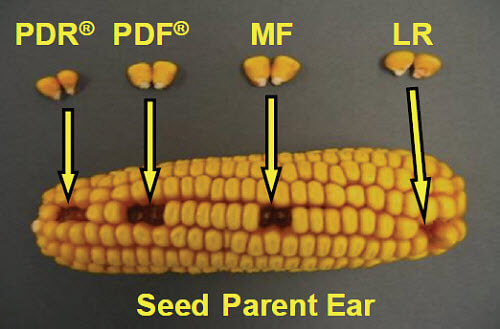When maize seed goes through the conditioning process, it is separated into fractions based on kernel size and shape creating uniformity.
Fractions of seed corn in different kernel sizes averaged across leading Pioneer ® brand hybrid families in the northern U.S.
SEED SIZE OVERVIEW
- Kernel size (small, medium or large) and shape (round or flat) is determined primarily by the position of the kernels on the ear.
- Seed size and shape can also vary by hybrid and weather conditions during seed production, including temperature and rainfall.
- Small round kernels originate from the ear tip, flats from the middle and large round kernels from the butt end of the ear.
- All kernel sizes from the same hybrid have the same yield potential.
Image supplied by Du Pont Pioneer
- F denotes flat seed and R denotes round seed.
- L denotes large seed and M denotes medium seed.
- Precision design rounds and flats (PDR® seed and PDF® seed) reference specific sizes that are suitable to specific planter plates. The majority of the seed from an ear segregate into PDR seed and PDF seed fractions.
IMPACT OF SEED SIZE
- Kernel size has minimal effect on seed vigor, field emergence or final yield.
- Seed is sized to maintain uniformity based on planter requirements.
- The most important factor in corn yield is the choice of hybrid (genetics). Planting the right hybrid with the desired agronomic traits will provide the best overall yield results
SEED SIZE & RELATIVE IMPACT ON MAIZE YIELD

Nearly all kernel sizes can be successfully planted with all planter types. Additional adjustment may be required in some cases
KERNEL SIZE PLANTABILITY
Kernel size-plantability guidelines for air, vacuum, finger pick-up and plate-type planters

August 13, 2018








